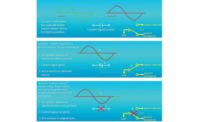Last month, I wrote about the design team’s commitment to making a profit on each job. This month is a very special month for the team — the time to come together and look back at the year’s performance, and to look forward to next year’s performance.
Each November, I’d have a team meeting to do just that. We’d meet in a conference room for about three hours and discuss what we knew and what we projected/forecasted for the upcoming year. There were several reasons why I did this, beginning with the group learning there needed to be a business plan and each year’s plan should update what had been documented in the past. This, along with getting all members to participate in developing our business goals for the upcoming year, was very important to me. I wanted to achieve “buy-in” from all participants so that this would be our team plan and not just my plan.
What We Knew
-
Using a standardized list I titled “Client Maintenance,” we had a list of repeat clients and a 12-month calendar documenting the contract fees we had closed on in the current year, and we discussed this initiative and how well we did or didn’t do.
-
On this client maintenance list, we had documented work we were awarded from new customers we had specifically targeted this year, along with the fee and month the proposal was closed. This was a worthwhile discussion because it showed the group that we could target certain clients and actually make an opportunity happen.
-
We also inputted new customers who had sought us out and had hired us along with the month and fee. Frequently, these opportunities came from other client’s reference, as well as request-for-proposal that we prequalified at the time determining whether we wanted to pursue this additional work.
-
We had the year-to-date group operating budget for an open discussion, and this was sorted by the products we sold (e.g., commissioning, retro-commissioning, facility assessment). This, too, educated the group on the financial side of the business.
After reviewing and assessing how well we were doing for the current year, based on our business plan and financial plan, we moved on to forecasting next year’s plans.
What We Projected/Forecasted
-
Based on the current year’s client list, we had an open discussion on possible clients that we did not want to work with in the coming year. Now some may think this is a little “nervy,” but I’ve learned years before that I did not need to always feel compelled to work with clients who didn’t appreciate your work effort, didn’t want to pay a reasonable fee, and/or were chronic late payers. Pursuing consulting work doesn’t have to be a one-way street.
-
Elimination completed, we discussed repeat clients and what we knew to date of new projects scheduled to occur next year, anticipated volume, and how we could win this work. We also discussed other opportunities that we could possibly make happen, such as an energy retrofit opportunity that was not on a repeat client’s radar.
-
We next discussed potential prospects that we could target with the intent of being hired by these prospects. For the size of our group, we would come up with four or five potential clients and a brief conversation about each, but we would move the discussion to another time where we could have a more focused forum on making these prospects new clients.
-
Based on the economy, it is always a good time to discuss what else we could do to generate business. An example of this is to pursue engineer-led, design-build infrastructure versus design-bid-build. Knowing your repeat clients, this could be a new product to market with repeat clients because it would be in their best interest to contract this method of project delivery. Design-build and integrated project delivery, based on my experience, always saves time and building program costs while controlling scope-creep.
-
Using the newly created client maintenance list for next year with associated fee estimates, we edit the current year’s operating budget taking into account volume of work and address the potential in adding staff to accommodate the projected workload.
This is an abbreviated, time-tested, end-of-year, team-building agenda that creates next year’s roadmap.






